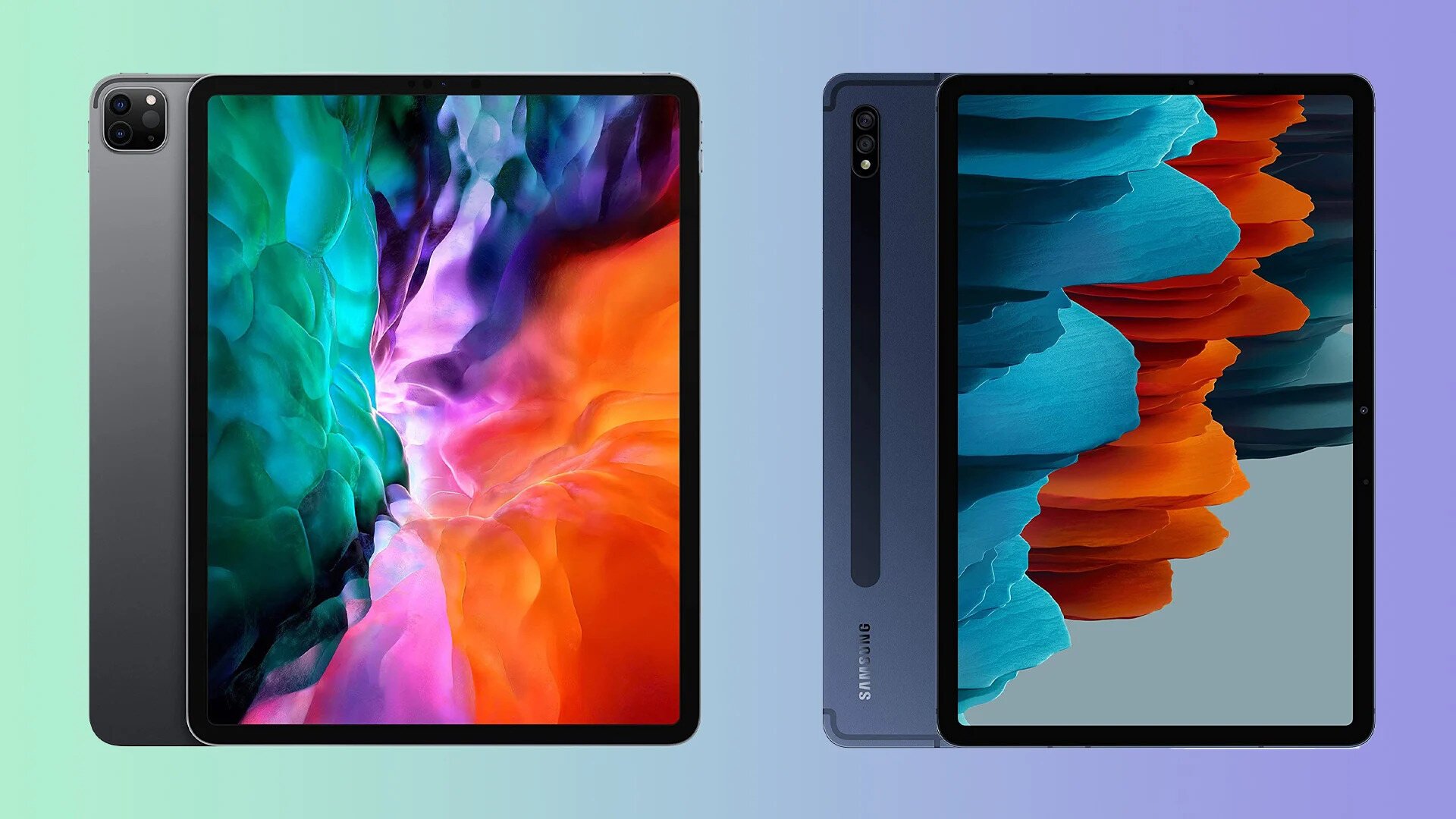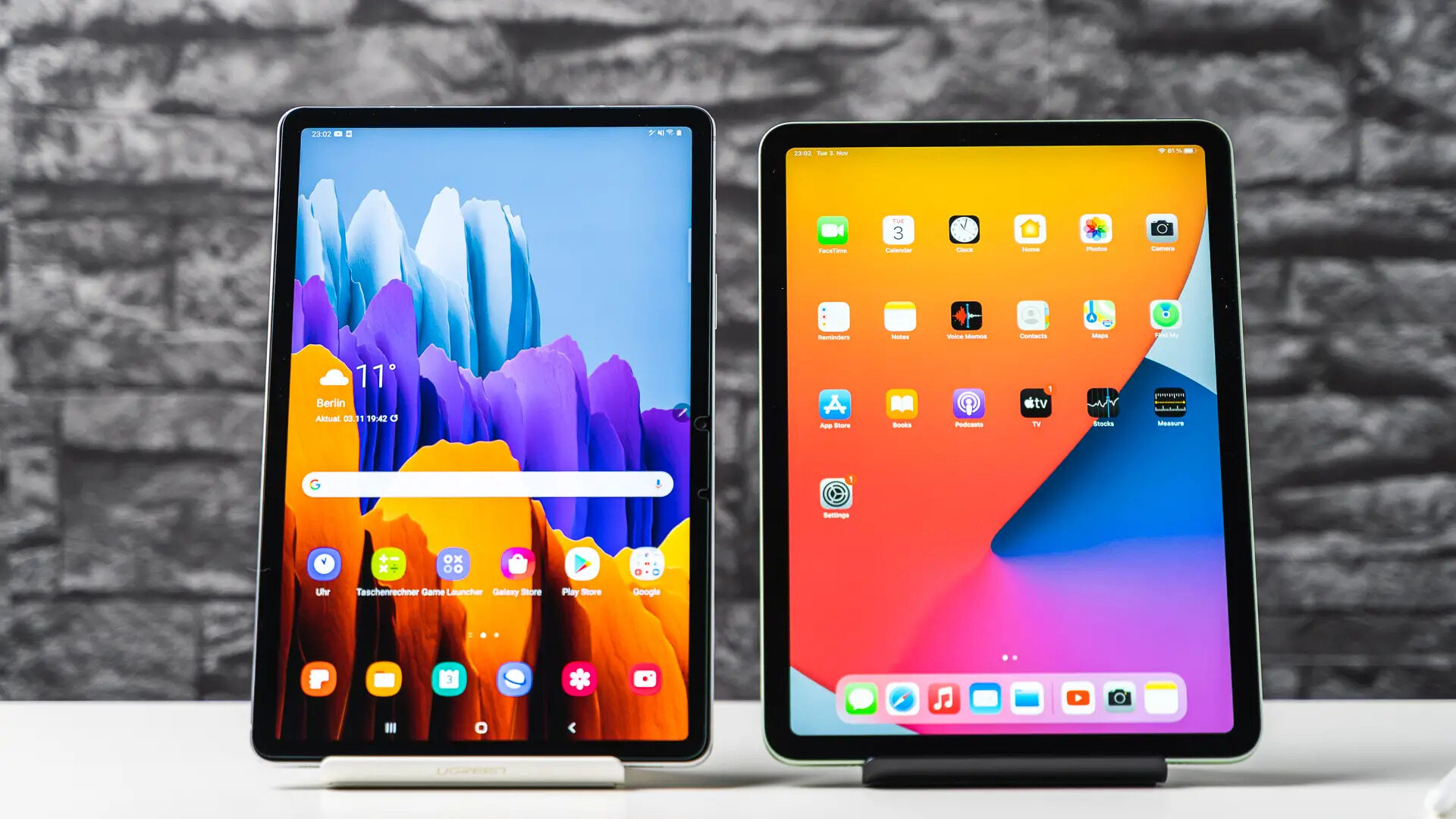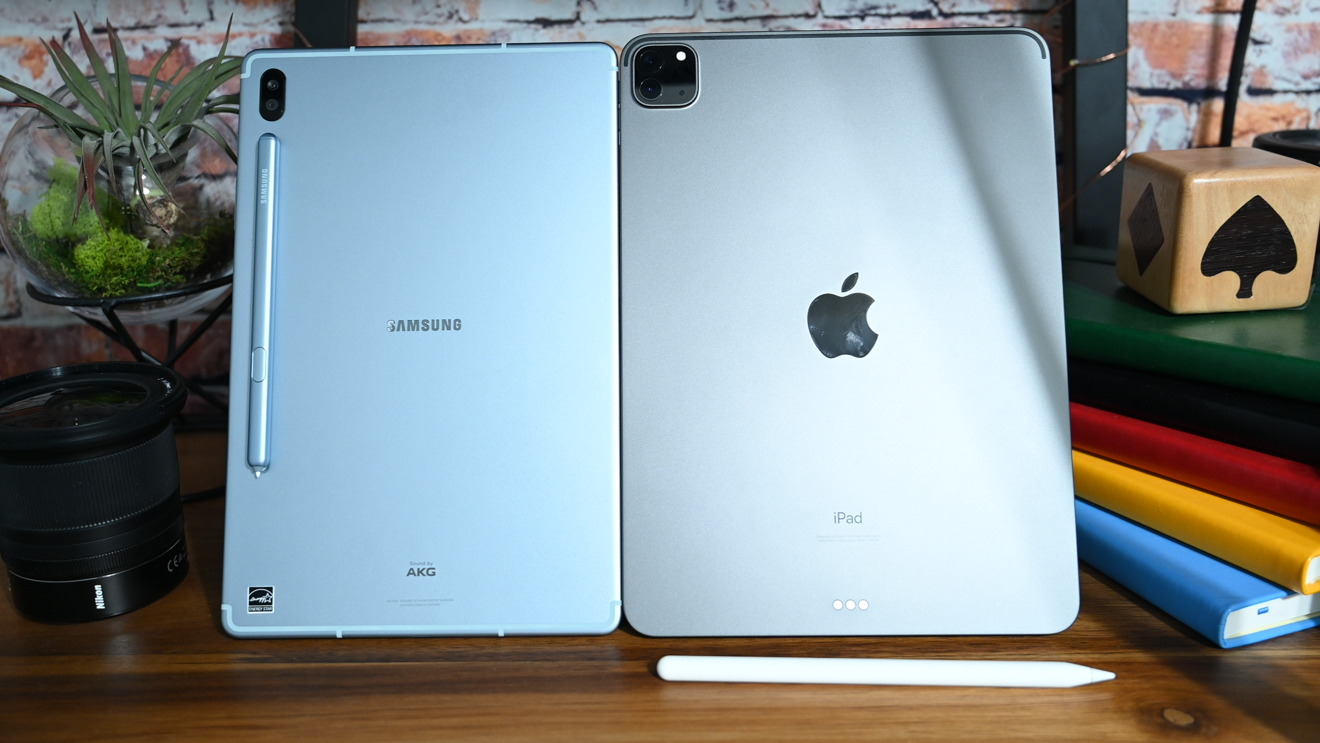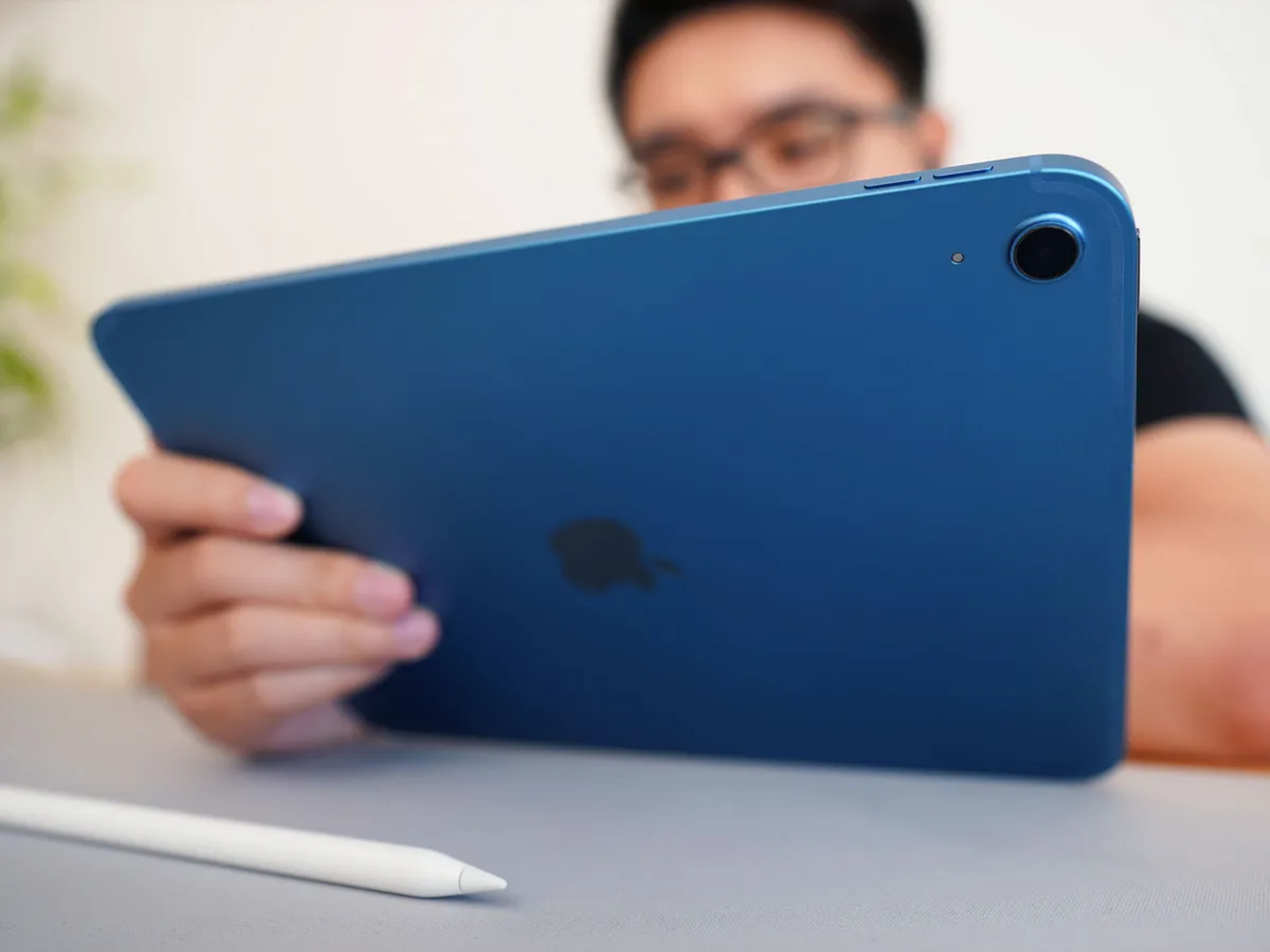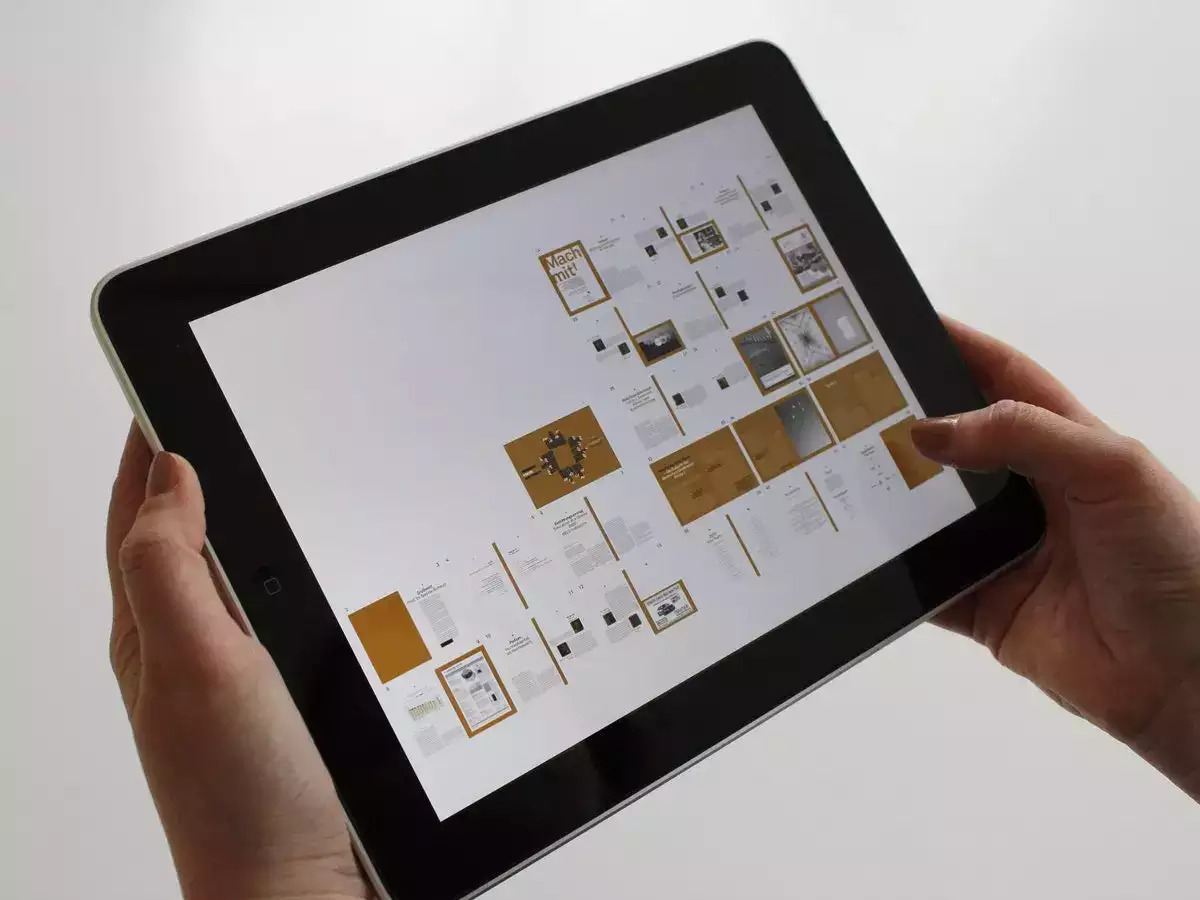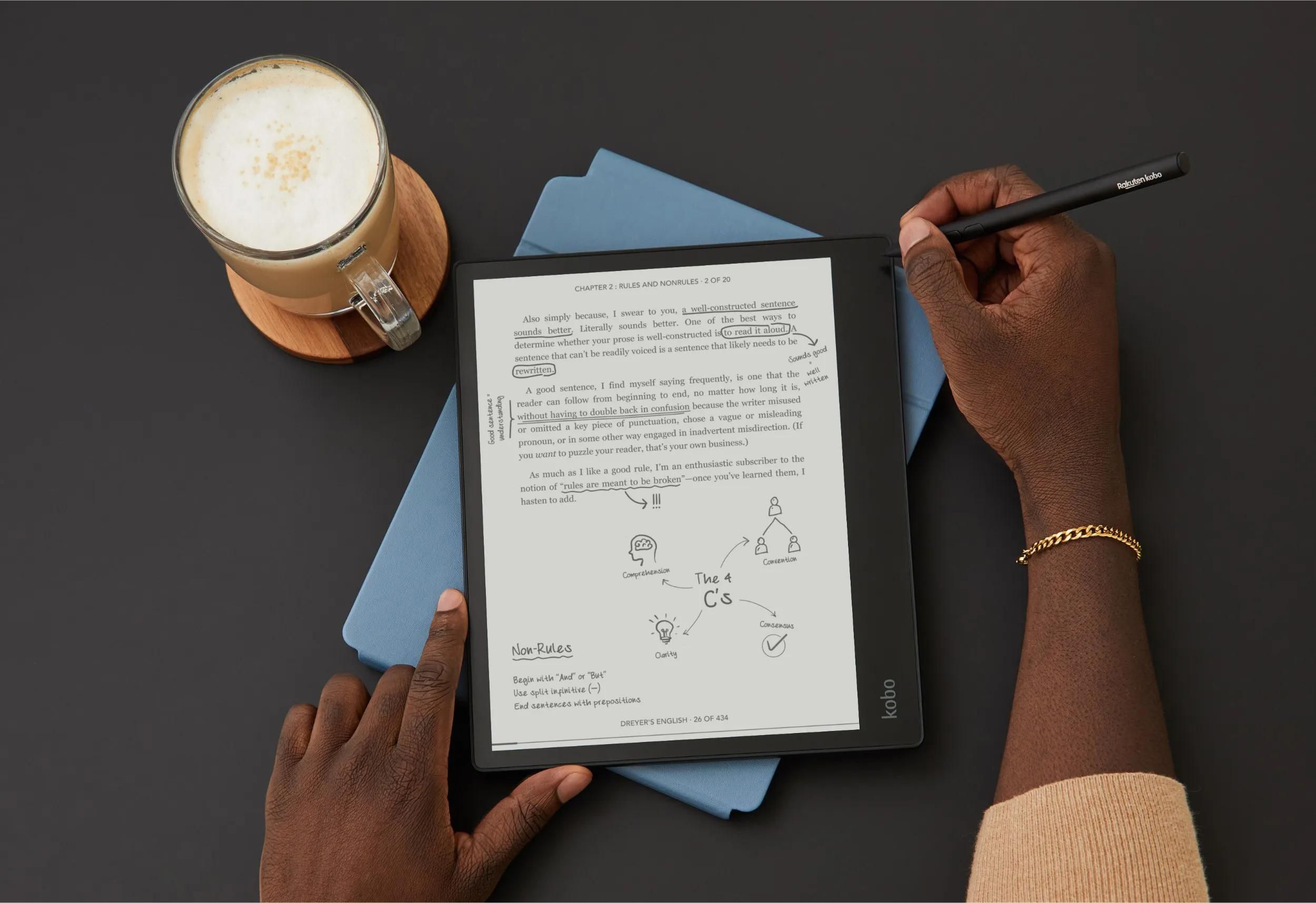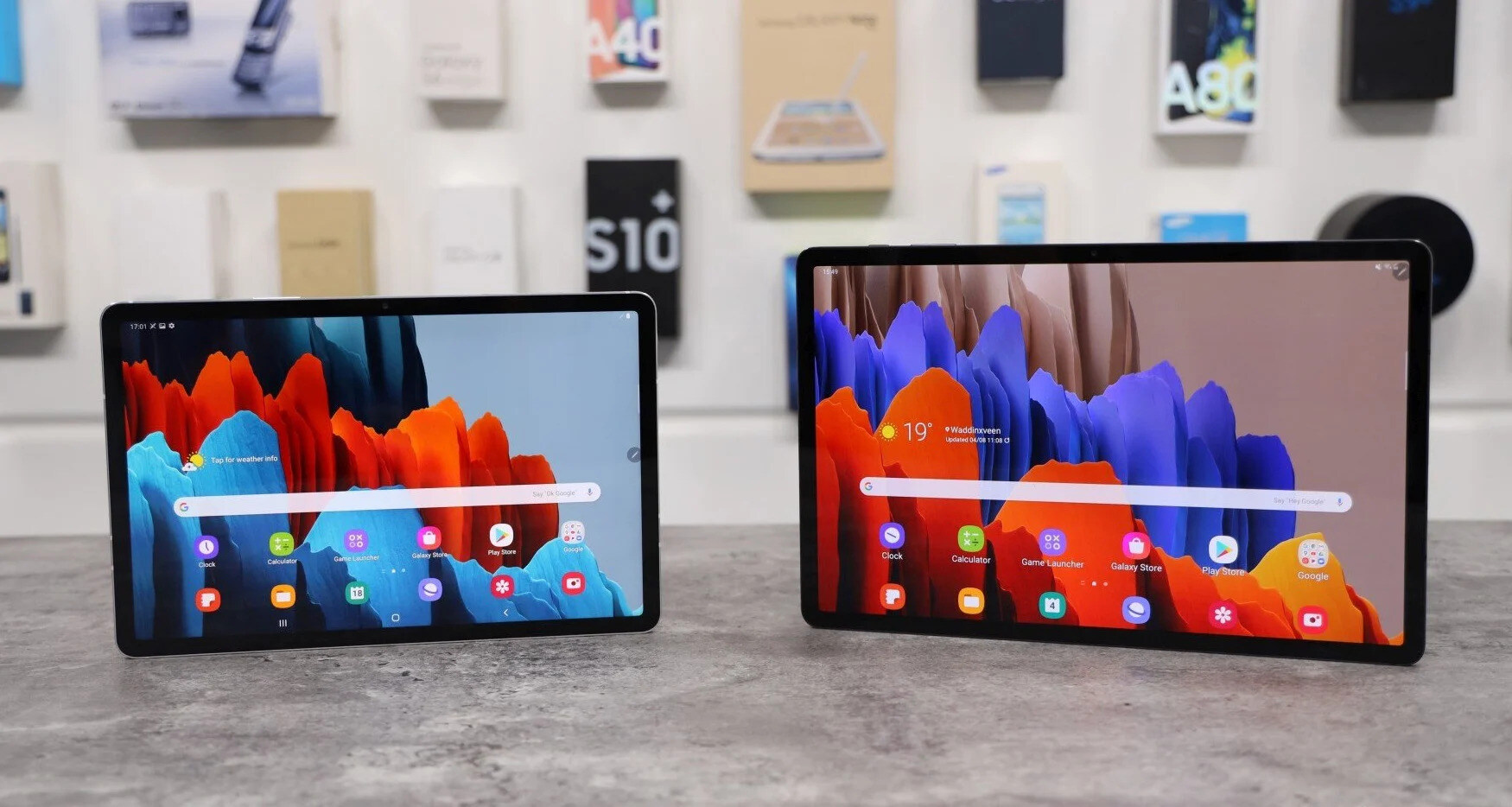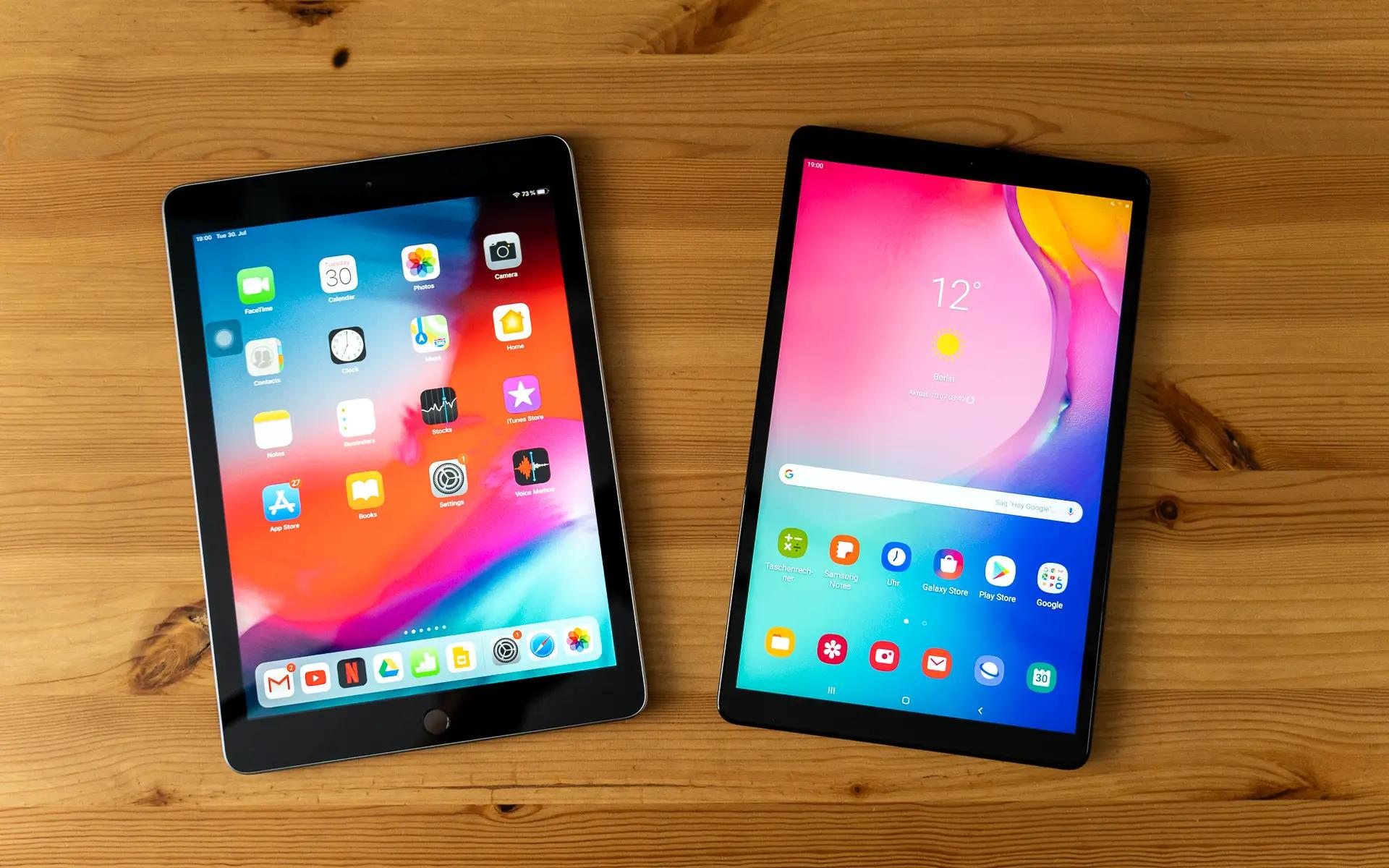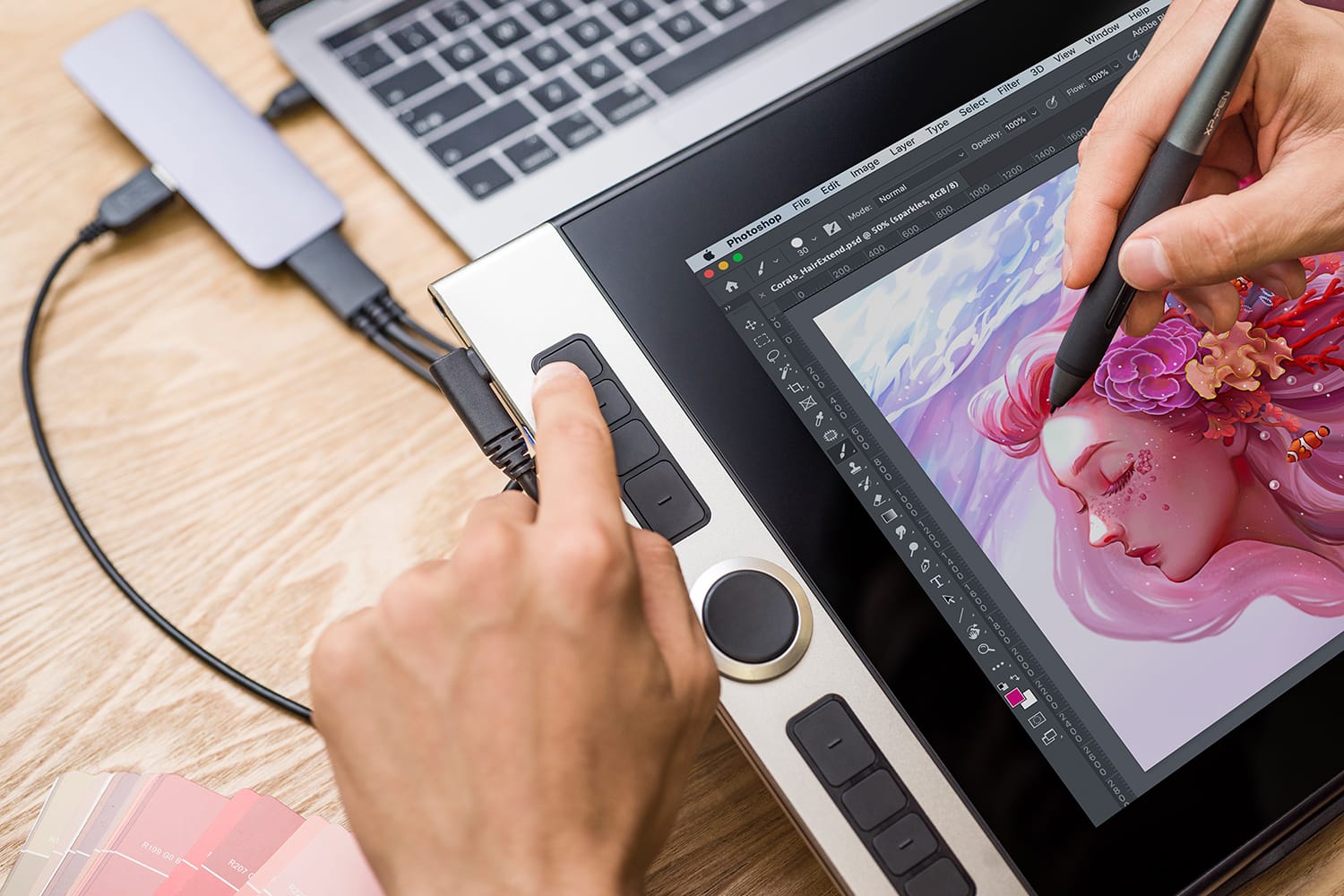Introduction
Welcome to the ultimate showdown between two giants in the tablet market – the iPad and Samsung Tablet. In today’s digital age, tablets have become an essential gadget for many individuals, offering a wide range of features and capabilities. Both Apple and Samsung have carved their places in the tablet industry with their innovative devices and loyal customer base. But when it comes to choosing between the iPad and Samsung Tablet, which one is better?
This article aims to delve into the various aspects of both tablets to help you make an informed decision. We will examine design and build quality, display, performance and processing power, operating system and user interface, battery life, storage and expandability, camera and multimedia capabilities, connectivity and accessories, as well as the price and overall value for money.
As we embark on this comparison journey, it is important to note that personal preferences and requirements may heavily influence your choice. What might be the perfect tablet for someone could be less suitable for another. Therefore, it’s important to consider your needs, budget, and desired features when deciding between the iPad and Samsung Tablet. Let’s dive into the details and find out which tablet reigns supreme in each category!
Design and Build Quality
The design and build quality of a tablet play a significant role in the overall user experience. Both the iPad and Samsung Tablet offer sleek and stylish designs, but there are subtle differences in their construction.
The iPad is renowned for its premium and minimalist design. It features a sleek aluminum body that exudes elegance and durability. The iPad’s slim profile and smooth edges make it comfortable to hold for extended periods. Additionally, the placement of buttons and ports on the iPad is well-thought-out for ease of use.
On the other hand, Samsung Tablets often prioritize functionality and versatility in their design. They employ a combination of glass and metal in their construction, which not only enhances the device’s aesthetics but also provides durability. Samsung Tablets also tend to have thinner bezels, resulting in a larger screen-to-body ratio, which contributes to a more immersive viewing experience.
When it comes to build quality, both the iPad and Samsung Tablet excel. They are solidly built and can withstand regular use and occasional bumps and knocks. However, some users may prefer the robustness and sturdiness of the iPad’s aluminum body, while others may appreciate the sleek and modern feel of Samsung Tablets.
Ultimately, choosing between the iPad and Samsung Tablet in terms of design and build quality depends on personal preferences. If you value a premium and minimalist design, the iPad may be your ideal choice. However, if you prioritize versatility and a more immersive display, a Samsung Tablet might be the better option.
Display
When it comes to tablets, the display is a crucial factor to consider, as it significantly impacts the overall visual experience. Both the iPad and Samsung Tablet offer exceptional displays, but there are slight differences between them.
The iPad boasts a stunning Retina display, known for its high pixel density and vibrant colors. With excellent color accuracy and sharpness, the visuals on an iPad are incredibly crisp and detailed. Furthermore, Apple’s True Tone technology adjusts the display’s color temperature based on ambient lighting conditions, providing a more natural viewing experience.
Samsung Tablets, on the other hand, feature vibrant Super AMOLED displays that offer deep blacks and vibrant colors. This technology enhances contrast and provides excellent color saturation, resulting in immersive and visually pleasing content consumption. Samsung Tablets also often have higher resolution displays, which can be advantageous when viewing high-definition content or engaging in graphic-intensive activities.
Both the iPad and Samsung Tablet displays offer wide viewing angles, making it easier to share content with others without compromising visual quality. Additionally, they incorporate features such as anti-reflective coatings to reduce glare and improve readability, especially in bright environments.
Ultimately, choosing between an iPad and Samsung Tablet display depends on personal preference. If you prioritize color accuracy and sharpness, the iPad’s Retina display is an excellent choice. However, if you prefer vibrant colors, deep blacks, and higher resolution, Samsung Tablets with Super AMOLED displays will meet your expectations.
Performance and Processing Power
When it comes to performance and processing power, both the iPad and Samsung Tablet offer a range of devices with varying capabilities. These devices are equipped with powerful processors and ample RAM to handle demanding tasks efficiently.
The iPad, powered by Apple’s custom-designed chips, is known for its smooth and lag-free performance. The latest iPad models often feature the A14 Bionic chip, which offers impressive speed and power. With this chip, the iPad can handle multitasking, graphic-intensive games, and resource-hungry applications with ease. Apple’s focus on software optimization further enhances the iPad’s overall performance.
Samsung Tablets, on the other hand, feature a range of processors, including Qualcomm Snapdragon and Samsung Exynos chips. These processors provide excellent performance and power efficiency, enabling seamless multitasking and smooth app performance. Samsung also incorporates its own software optimizations to enhance the tablet’s overall responsiveness.
Both the iPad and Samsung Tablets offer sufficient processing power to handle everyday tasks such as web browsing, media consumption, and productivity applications. However, in terms of raw benchmark performance, the iPad tends to have a slight edge over Samsung Tablets.
It’s worth noting that the performance of a tablet is not solely dependent on its processor. Factors such as software optimization, RAM capacity, and storage speed also contribute to overall performance. Therefore, it’s essential to consider the specific model and specifications when comparing the performance and processing power of the iPad and Samsung Tablet.
In the end, both the iPad and Samsung Tablet offer impressive performance and processing power. Whether you choose the iPad or Samsung Tablet, you can expect a smooth and responsive experience for your everyday tasks and activities.
Operating System and User Interface
The operating system (OS) and user interface (UI) are vital components of a tablet, as they determine how you interact with the device and access its features. The iPad and Samsung Tablet run on different operating systems, each with its own unique UI.
The iPad operates on iOS, Apple’s proprietary operating system. iOS offers a seamless and user-friendly experience with its intuitive interface. The UI is clean, straightforward, and optimized for touch interactions. Navigating through apps, settings, and menus is a breeze on an iPad, thanks to iOS’ simple and consistent design language. Additionally, iOS provides a seamless integration with other Apple devices, allowing for a cohesive ecosystem and convenient continuity features.
Samsung Tablets, on the other hand, utilize the Android operating system, customized with Samsung’s own UI called One UI. Android offers a more customizable experience, allowing users to personalize their device according to their preferences. With One UI, Samsung adds its own touches to Android, such as the ability to multitask with split-screen functionality and access to a wealth of customization options. The UI on Samsung Tablets is designed with a focus on productivity and flexibility.
Both iOS and Android have extensive app libraries, providing access to a wide range of applications for various purposes. However, it’s worth noting that some apps may be optimized better for one OS over the other.
Choosing between iOS and Android comes down to personal preference and familiarity. If you already own other Apple devices or prefer a more curated and streamlined experience, the iPad with iOS is an excellent choice. On the other hand, if you value customizability and flexibility, along with access to a broader range of device options, a Samsung Tablet with Android and One UI will suit your needs.
Battery Life
When it comes to using a tablet on the go, battery life is a crucial factor to consider. Both the iPad and Samsung Tablet offer impressive battery performance, allowing users to enjoy extended usage without constantly searching for a charger.
The iPad is known for its exceptional battery life. Thanks to optimized hardware and software integration, iPads can last for hours on a single charge. Whether you’re streaming videos, browsing the web, or working on documents, you can rely on the iPad to provide consistent battery performance. The exact battery life may vary depending on the specific iPad model and the intensity of usage, but overall, iPads are known for their longevity.
Samsung Tablets also offer solid battery life, although it may vary between different models. Samsung optimizes its tablets to ensure efficient power consumption and maximize battery longevity. With moderate usage, you can expect a Samsung Tablet to last through a full day without needing a recharge. However, more demanding activities such as gaming or streaming high-definition content may drain the battery faster.
It’s important to note that battery life can be influenced by various factors, such as screen brightness, network connectivity, and app usage. Additionally, different tasks and activities require varying amounts of power. While both the iPad and Samsung Tablet offer reliable battery life, it’s advisable to consider your specific usage patterns and needs.
In terms of charging options, the iPad predominantly uses Apple’s proprietary Lightning connector for charging and data transfer. Samsung Tablets, on the other hand, often utilize USB-C for charging, which offers faster charging capabilities and wider compatibility with other devices.
Overall, both the iPad and Samsung Tablet provide impressive battery life that can cater to the needs of most users. However, it’s important to consider the specific model and usage patterns to determine which device offers the most suitable battery performance for you.
Storage and Expandability
When it comes to storage, the iPad and Samsung Tablet offer different options to meet a variety of storage needs. The amount of built-in storage and expandability options can greatly impact the functionality and versatility of the device.
The iPad is available in various storage capacities, ranging from 32GB to 1TB, depending on the model. This allows users to choose the storage option that best suits their needs. However, it’s essential to note that iPads do not have expandable storage capabilities. Once you select a specific storage capacity, you are limited to that amount and cannot add additional storage later on.
Samsung Tablets, on the other hand, typically offer a base storage option, along with expandable storage via a microSD card slot. This allows users to start with a certain amount of built-in storage and later increase it by simply inserting a compatible microSD card. The expandability of storage provides greater flexibility, as you can easily add more storage to accommodate your growing media library or to store larger files.
It’s important to consider your storage needs before making a decision. If you require a significant amount of built-in storage or anticipate the need for additional storage in the future, a Samsung Tablet with expandable storage might be the better choice. However, if you typically don’t need extensive storage or prefer the simplicity of a fixed storage capacity, the iPad’s various storage options will suffice.
Additionally, it’s worth mentioning that both the iPad and Samsung Tablet offer cloud storage options. With services like iCloud for the iPad and Samsung Cloud for Samsung Tablets, you can offload data to the cloud and free up device storage.
Ultimately, the decision between the iPad and Samsung Tablet in terms of storage and expandability ultimately comes down to personal preferences and storage needs. Consider how much storage you require now and in the future, as well as your willingness to invest in cloud storage or the convenience of expandable storage.
Camera and Multimedia
Tablets have become increasingly popular for multimedia consumption and capturing memories on the go. When it comes to camera capabilities and multimedia features, both the iPad and Samsung Tablet offer a range of options to cater to different user needs.
The iPad is well-known for its impressive camera performance. The latest iPad models are equipped with high-resolution rear cameras that can capture detailed photos and videos. Additionally, iPads often feature advanced camera functionalities, such as optical image stabilization and enhanced low-light performance, which enhance the overall image quality. The front-facing cameras on iPads are also optimized for video calls and selfies, providing clear and crisp visuals.
Samsung Tablets, on the other hand, also offer excellent camera capabilities. With high-resolution rear cameras and advanced sensors, Samsung Tablets can produce detailed and vibrant images. Samsung also equips its tablets with various camera features, such as panorama mode, selective focus, and augmented reality (AR) capabilities, to enhance photography possibilities. The front-facing cameras on Samsung Tablets are designed for video calls and selfies, offering clear and sharp visuals.
When it comes to multimedia consumption, both the iPad and Samsung Tablet excel. Their large and vibrant displays make them perfect for watching movies, TV shows, and videos. The quality of audio playback is also crucial for an immersive multimedia experience. Both devices offer high-quality speakers that deliver clear and loud sound, ensuring an enjoyable audio experience.
In terms of multimedia software and applications, both iOS and Android offer a wide selection of media apps for streaming music, movies, and TV shows. From popular streaming services to media player apps, you’ll have access to a vast library of multimedia content on both the iPad and Samsung Tablets.
Ultimately, whether you choose the iPad or Samsung Tablet for camera capabilities and multimedia features depends on your specific requirements. If photography and video recording are crucial to you, both devices offer excellent camera performance. Similarly, if you value immersive multimedia playback, both devices provide fantastic visuals and audio quality for an enjoyable media experience.
Connectivity and Accessories
Connectivity options and available accessories can greatly enhance the functionality and versatility of a tablet. Both the iPad and Samsung Tablet offer various connectivity features and a wide range of accessories to complement your device.
The iPad offers seamless connectivity with other Apple devices through features like AirDrop, iMessage, and Continuity. This allows for easy file transfer, messaging, and integration across multiple Apple devices. Additionally, iPads generally come with Wi-Fi and Bluetooth connectivity options, ensuring you can connect to wireless networks and pair with compatible devices such as headphones and speakers.
Samsung Tablets also offer a range of connectivity options. They support both Wi-Fi and Bluetooth connectivity, allowing you to connect to wireless networks and pair with compatible devices. Samsung Tablets may also offer additional features such as NFC (Near Field Communication), which enables easy transfer of files and connections to other NFC-enabled devices.
When it comes to accessories, both the iPad and Samsung Tablet have a vast ecosystem of accessories to enhance your tablet experience. These include keyboard cases, stylus pens, protective cases, and more. For the iPad, the Apple Pencil is a popular accessory that offers precise stylus functionality for drawing, note-taking, and creative tasks. Samsung Tablets also have their own range of stylus pens, such as the S Pen, which provides similar functionalities and enhances productivity.
Both the iPad and Samsung Tablet are compatible with a wide range of third-party accessories, including wireless keyboards, external storage devices, and docking stations, which can further expand the capabilities and usability of the tablets.
Connectivity and accessory options ultimately depend on your specific needs and preferences. If you already own other Apple devices or prefer the seamless integration within the Apple ecosystem, the iPad may be the better choice. On the other hand, if you value the flexibility to choose from a wider range of accessories and enjoy customization options, Samsung Tablets offer more versatility.
Price and Value for Money
When considering a tablet purchase, price plays a significant role in the decision-making process. Both the iPad and Samsung Tablet offer a range of models at varying price points, allowing users to find a device that suits their budget and offers good value for money.
The iPad, being Apple’s flagship tablet, tends to be positioned in the higher price range. The cost is influenced by factors such as the model, storage capacity, and additional features like cellular connectivity. While iPads may be more expensive upfront, they often retain their value well over time, making them a wise investment in the long run.
On the other hand, Samsung Tablets generally offer more price diversity, with a wider range of models available at various price points. Samsung Tablets provide an opportunity to find a device that fits your budget while still delivering respectable performance and features.
It’s important to consider the overall value for money when deciding between the iPad and Samsung Tablet. While the iPad may be pricier, it often offers a polished and optimized user experience, with regular software updates and access to a comprehensive app ecosystem. Additionally, the build quality and customer support associated with Apple products contribute to the overall value.
Samsung Tablets, on the other hand, offer competitive features and capabilities at relatively lower price points. They provide flexibility in terms of expandable storage, customization options, and access to the Android ecosystem. If you prioritize affordability and customization, a Samsung Tablet may offer better value for money.
Ultimately, the choice between the iPad and Samsung Tablet in terms of price and value for money depends on your budget and specific requirements. It’s essential to consider the features, performance, longevity, and overall user experience offered by both options to determine which device offers the best value for your investment.
Conclusion
After comparing various aspects of the iPad and Samsung Tablet, it is evident that both devices have their strengths and cater to different user preferences. Choosing between the two ultimately depends on your specific needs, budget, and desired features.
The iPad stands out with its premium design and build quality, along with the seamless integration within the Apple ecosystem. With its Retina display, powerful performance, and optimized user interface, the iPad offers a sleek and intuitive user experience. The iPad also retains its value over time, making it a valuable long-term investment for Apple enthusiasts.
On the other hand, Samsung Tablets provide a wider range of options at various price points. They offer versatile customization, expandable storage, and compatibility with a diverse range of accessories, giving users more flexibility. Samsung Tablets are ideal for users who prefer the Android operating system, desire customization options, and a wider selection of device models to choose from.
Ultimately, you must consider your personal preferences and requirements when deciding between the iPad and Samsung Tablet. It’s crucial to prioritize factors such as design, display, performance, operating system, battery life, storage options, camera capabilities, connectivity, and accessories.
If you value a premium and minimalist design, seamless integration within the Apple ecosystem, and a refined user experience, the iPad is a fantastic choice. However, if you prefer customization options, expandable storage, and access to a wider range of device models at varying price points, a Samsung Tablet will likely meet your needs.
Both the iPad and Samsung Tablet offer impressive features and capabilities that enhance productivity, entertainment, and overall tablet experience. By considering your preferences, budget, and specific usage requirements, you can make an informed decision and select the tablet that best suits your needs.







